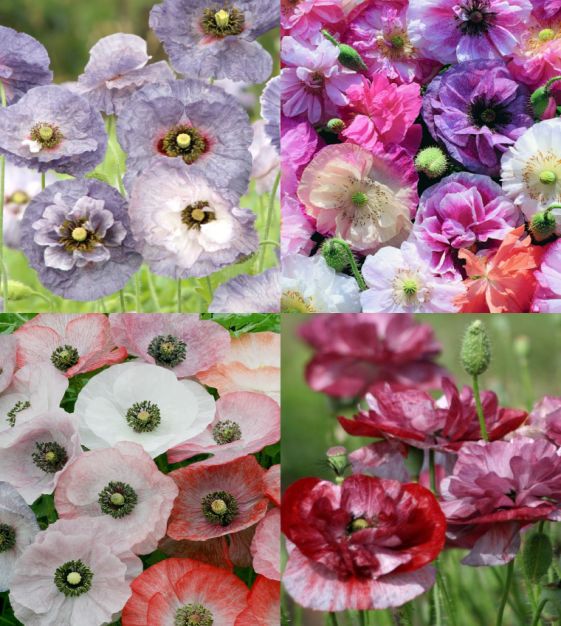Adorning gardens around the world, Poppies are available in a wide range of species, unique colors and sizes. Poppies are best sown directly into your garden beds in late fall or winter, or early spring at the very latest. Their seeds appreciate the stratification that winter provides, and they also need chilly temperatures to germinate in spring. Poppies also abhor root disturbance, so transplanting seedlings grown indoors will likely result in failure. (If you must start indoors for transplant out, use individual cells or pots~not flats.)
Once you've selected your Poppy seeds, choose the spot in which you'd like them to grow. It's essential that Poppies be grown in lean, well-draining soil, though Oriental Poppies are an exception--they prefer richer soil. For all other Poppies, simply clear the spot of any lingering weeds or debris, scratch the soil up lightly with a rake, and sprinkle the seeds on the surface. Poppy seeds are small and dark~mixing the seeds with sand will make it easier to sow them evenly and to see where you've sown them. Poppy seeds need light to germinate, so don't bother covering them. Fall rains and winter snow cycles will nestle them into the soil perfectly. In spring, once the seedlings begin to pop up, thin them to about 6" to 10" apart. Bee friendly. Deer resistant.
Average seed life: 4 to 5 years.




